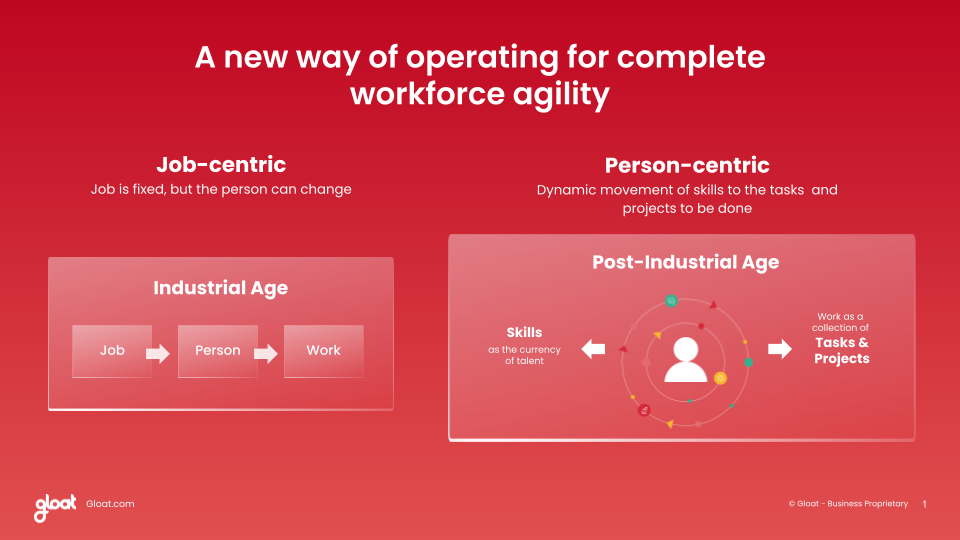Representation and diversity: the differences and why they matter
Learn what it takes to break down barriers and level the playing field

Most organizations recognize that promoting diversity needs to be a priority in the new world of work. Nearly 1 out of 2 CEOs view building a more equitable workplace as one of their top challenges, while 61% of workers think diversity and inclusion (D&I) strategies are beneficial and essential.
Although leaders and employees may see eye to eye on the importance of equity, many diversity and inclusion (D&I) initiatives are overlooking a crucial component that’s essential for driving lasting change: representation. While diversity is about bringing together people from all walks of life, representation ensures that these diverse employees—and their viewpoints—can be found or depicted across all departments and seniority levels within the organization.
The sooner leaders recognize the nuances that differentiate these terms, the sooner they can prioritize representation to ensure their organization is on the right track to breaking down barriers and empowering all employees to achieve their full potential.
Diversity does not equal representation
Diversity is a term that refers to the variety of different perspectives on a team. While it is often used in the context of race and social justice issues, diversity represents a broader range of experiences, including gender, sex, socioeconomic background, upbringing, religion, education, sexual orientation, ethnicity, neurodiversity, and life experience.
Representation is about seeing people of all backgrounds making meaningful contributions throughout every level and department within your organization. A business that has people from all walks of life might be diverse, but if employees with similar backgrounds are segmented within a few functions or departments, then the level of representation at this organization may still be lacking. To create a workplace that is genuinely inclusive and equitable, organizations must prioritize both representation and diversity.
Why does representation matter in the workplace?
If employees don’t see someone with a similar background progressing within your organization, it sends an implicit message that they may not have as many growth opportunities as some of their peers. In contrast, when workers can look up to a colleague or manager with shared circumstances, they will feel confident in their ability to grow with your business.
Most leaders recognize that there are several important advantages associated with prioritizing diversity and inclusion, including enhanced performance and engagement. Representation is a crucial part of the equation in order to fully reap these benefits.
In fact, McKinsey found that the greater the representation within an organization, the higher the likelihood of outperformance. Companies with more than 30 percent women executives were more likely to outperform companies where this percentage ranged from 10 to 30, and in turn, these companies were more likely to outperform those with even fewer women executives or none at all.
The benefits of prioritizing diversity and representation
Prioritizing diversity and representation is flatly the moral thing to do. On top of that, it also comes with a handful of game-changing benefits.
Broader talent pools
Emphasizing diversity and representation starts by redefining what “qualified” applicants look like. Rather than letting potentially bias-inducing factors like geographic location or educational background determine who’s included in your talent pools, equitable organizations take a skills-based approach to talent management.
A greater breadth of ideas
Ideas don’t come out of thin air; they’re created by teams of people. The more diverse those teams are across many dimensions—culture, ethnicity, gender, sexuality, age, experience level, educational background, and expertise—the more likely they are to draw inspiration from seemingly unrelated places.
Better customer loyalty
Today, it takes more than a quality product to win over customers. Consumers are looking for brands that have values that align with their own and businesses that are committed to driving lasting change. This dedication will prove particularly imperative for the newest generations of customers, as 70% of younger millennials are more likely to choose a brand that demonstrates a commitment to promoting inclusion and diversity.
4 steps to improve representation within your organization
There are several steps that leaders can take to ensure that employees see peers from different backgrounds represented in various departments, functions, and seniority levels.
#1. Ensure your external talent pools are diverse
If your talent pools aren’t diverse, your organization will never be equitable. Diversifying talent pools takes a sustained effort from talent acquisition and HR teams, who must review recruitment processes to remove any potentially bias-inducing questions and parameters. Recruitment marketing initiatives and job postings should also be published across multiple channels to reach as diverse a pool of applicants as possible.
#2. Don’t overlook internal candidates
In addition to making an effort to diversify external talent pools, HR leaders should ensure that internal candidates are empowered to apply for new opportunities within the organization. Internal mobility is a rising priority for many team members, with 67% of employees saying they would leave their organization if internal mobility wasn’t offered.
To activate internal mobility, leading organizations are harnessing talent marketplaces, which match employees to projects, gigs, and full-time roles based on their skills, experiences, and aspirations.
#3. Prioritize mentorship programs
Mentorship programs represent a meaningful win for diversity and representation efforts. One study found that mentoring, in comparison to other tactics such as training and job tests, increased representation among managers in the workplace by up to 24%.
While any workplace mentorship program is beneficial, all strategies aren’t created equally. Rather than letting seniority level or role dictate mentorship pairings, skills-based plans match mentees to mentors based on shared career goals and related expertise. To maximize the success of their mentoring initiatives, many leaders are harnessing workforce intelligence to serve as a single source that sheds light on the knowledge and competencies within their organizations.
#4. Empower employees to expand their horizons
All employees need a full picture of the development opportunities that are available to them and the steps they will need to take to achieve their career goals. In the past, a lack of transparency hindered some employees’ career progression, making it challenging for workers—especially those from underrepresented groups—to achieve their full potential.
Instead of relying on subjective criteria like likeability or networking to determine who gets access to development opportunities, businesses must take an objective approach based on skills and aspirations. By harnessing a talent marketplace, employees can see a broad range of learning experiences across the organization. They can also leverage career pathing tools that spell out the skills they will need to master to take their professional progression to the next level.
To learn more about leveling the playing field, find out how workforce agility platforms help organizations improve diversity and representation efforts.




